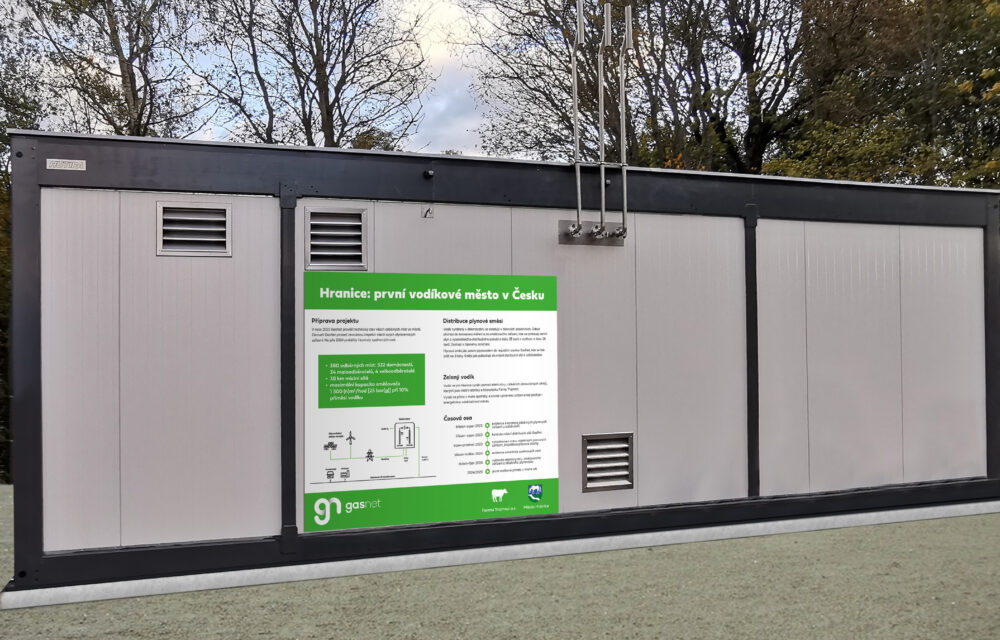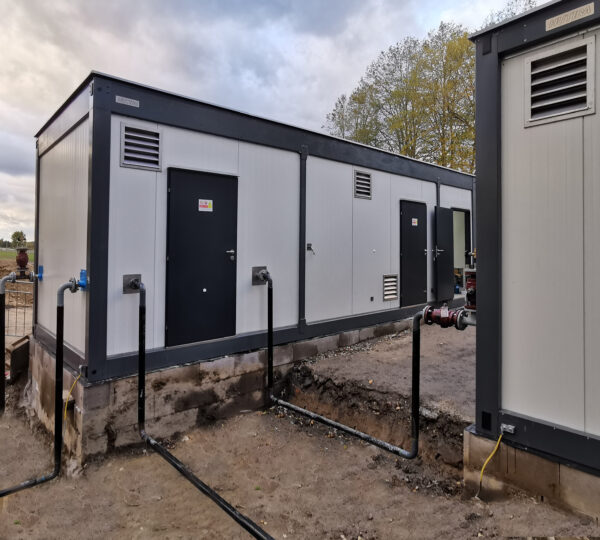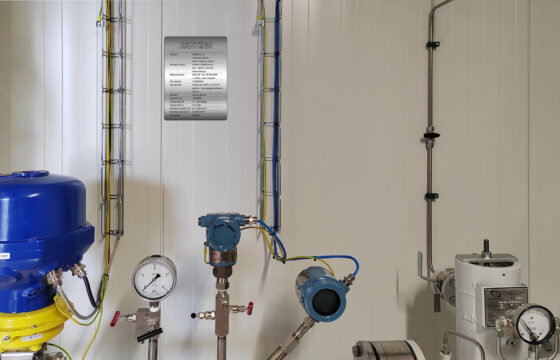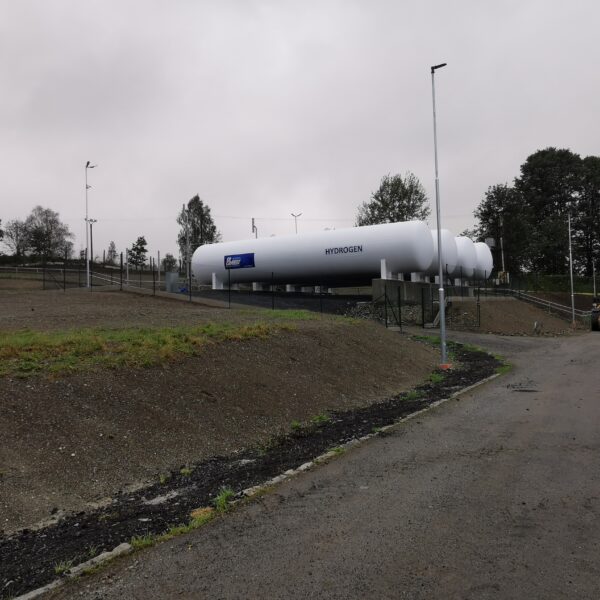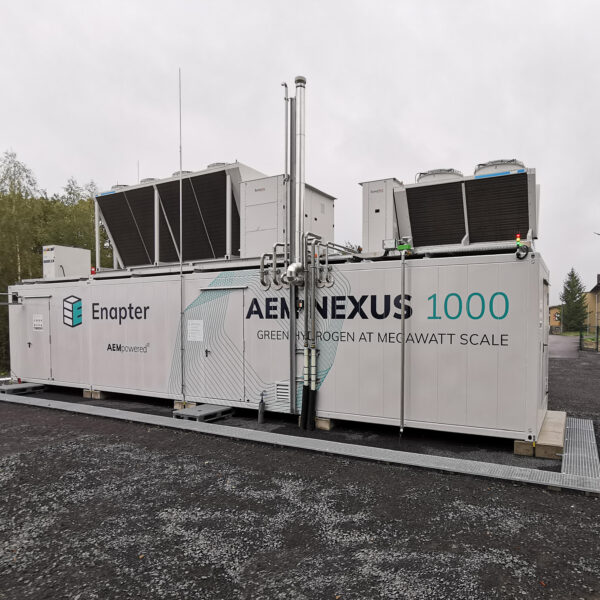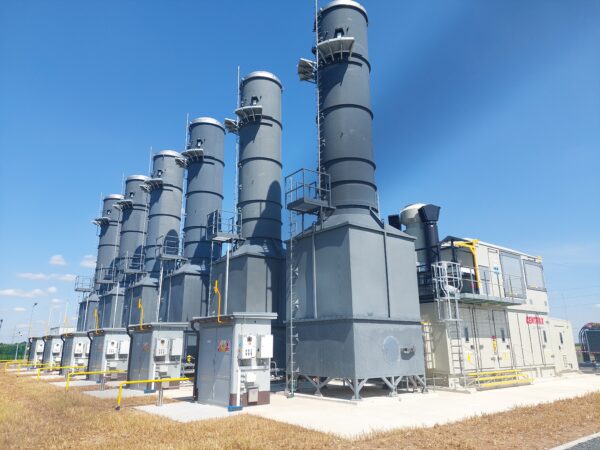30. 10. 2024
We are involved in the first hydrogen and natural gas blending station project. Helping to reduce air emissions
Thanks to us, the citizens of Hranice near Aš in the Karlovy Vary region are switching to low-emission gas. We have supplied the westernmost town in the Czech Republic with technology for a low-emission energy option that produces fewer emissions. Customers will now be able to use a mixture of natural gas with 10% hydrogen. This is widely regarded as the fuel of the future as it is not difficult to obtain and does not produce carbon dioxide emissions when burned. It is therefore a possible green alternative to natural gas and a renewable energy source. We are significantly involved in the project – we are the supplier of both the mixing station itself and the commercial and control metering technology.
Thanks to us, the municipality of Hranice u Aše has become one of the pioneers of the transition to low-emission fuels. In fact, it will gradually blend 10% hydrogen produced by local renewable sources into the natural gas for its consumers. The project by the gas distributor, the GasNet group, should be operational in the first half of 2025. A common objection to the use of hydrogen is its production, which is energy intensive. To keep the project’s carbon footprint as small as possible, so-called green hydrogen produced by electrolysis of water using electricity from renewable sources will be added to the mix. This will be provided by local wind turbines and the Tri-Community Farm with photovoltaics.
GasNet Group will provide the natural gas supply, while local sources will supply the hydrogen. However, these two substances need to be mixed in the right proportions and distributed to end users. Our company has therefore supplied the project with mixing equipment and innovative commercial and control metering technologies. “This is our first project of this type. It is both keenly watched and anticipated by the gas community. The mixing of hydrogen and natural gas has been talked about for a long time, and from our point of view it is one of the future trends. At the same time, it is another innovation that we have introduced to the Czech market – in the past, it was for example underground gas regulation, farm VTL stations or injection of biomethane into the gas network,” said Ivo Hutira, owner of HUTIRA.
The ratio of natural gas to hydrogen is key
We will then connect the mixing station to the GasNet gas distribution system and ensure the mixing of the high-pressure natural gas stream from the system with the hydrogen stream. The mixture then flows through a high-pressure pipeline to a control station that supplies a separate part of the distribution for the city of Hranice and the surrounding area. The entire plant is installed in a container. “The preparatory phase was particularly important, for example the approval of a key engineering tool, the PID diagram. This is a diagram used to visualise and analyse the control process, i.e. the correct future function. The approval of the bill of materials was also crucial, as we had to prove that all components were safe to use for the hydrogen mixture. Of course, it was also necessary to obtain a number of certificates, attestations and certifications that confirm the suitability of the hydrogen-natural gas mixture,” added Ivo Hutira.
The container solution was also chosen for the commercial and control measurement technology, which includes the control system and wiring. This test polygon should be connected to the hydrogen production in Hranice near Aš. “The project will also involve a range of testing and verification. We want this pilot project to be evaluated as efficient, economically viable, safe and very suitable for heat or electricity production. Logically, everything has to be perfectly measured and verified that the same mixture goes into the gas system,” said Ivo Hutira.
Within the project, we provide comprehensive delivery of the equipment – from the design of the technical solution, through processing, to the overall installation and commissioning. The commissioning also includes warranty tests or trial operation.
